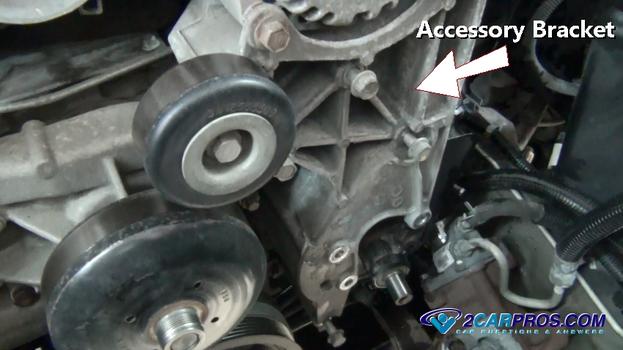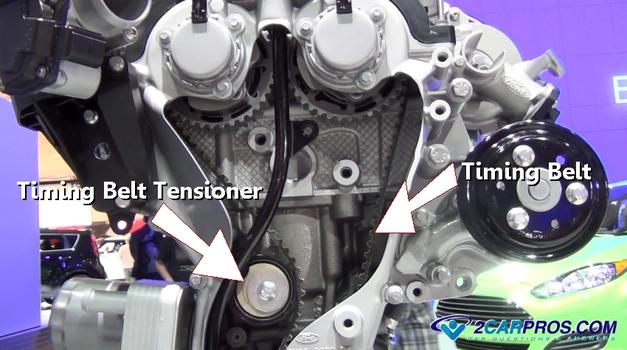Car Makes Rattle Noise
Engine Rattle
Car Engine Makes Rattling Noise While Driving
Helpful Information
A rattle or rattling noise can be one of the most frustrating sounds to find and repair. Rattling sounds can be generated by almost any part of the car from the engine to the transmission. The cost associated to repair a rattle can vary between tightening a loose bolt to replacing the a cam follower. Like with any noise, the first step is locating the region in which the sound is being generated from. If a rattle is consistent with the engine speed it could be generated by an engine accessory like an alternator.
Step by step guide on how to troubleshoot and repair an automotive engine rattle.
Difficulty Scale: 4 of 10
Begin with the vehicle on flat ground, in park with the emergency brake on, engine "OFF".
Step 1 - An engine relies on oil to supply lubrication to the inner moving parts. If the oil level is allowed to become low the engine cam followers or lifters will lose pressure allowing excessive clearance in the valve train causing a rattling noise. Also, as engine oil levels further degrade the rod, piston and crankshaft bearings can become damaged allowing clearance producing a knocking sound. Check the engine oil level and add oil as needed to obtain the proper engine oil level. (Note: If the oil level is severely low, and the engine is still rattling/knocking after oil has been added, permanent damage could have occurred and repair or replacement is required) -Learn more

Oil Dip Stick
Step 2 - A belt tensioner is used to hold pressure against the serpentine belt, when this tensioner fails it can make a rattling noise. - Learn More

Serpentine Belt Tensioner
Step 3 - A mounting bracket is used to support the various accessories such as the power steering pump, air conditioner compressor, alternator and air pimp (if equipped). If the bolt becomes loose or the bracket breaks it can cause a rattling noise, these brackets can be both cast or stamped metal.

Accessory Bracket
Step 4 - A timing belt or chain and tensioner is used to rotate the camshaft(s) that controls intake and exhaust valve operation. If this belt, chain or tensioner becomes loose or is failing it can cause a rattle noise that follows engine RPM. To check for this condition remove the timing belt or chain cover and use a flashlight to check for excess play.

Timing Belt and Tensioner
Step 5 - A vehicle equipped with an automatic transmission utilizes a flex plate to couple the transmission with the engine, it also supplies the starter with a ring gear which is used to start the engine. If the flex plate becomes cracked or loose it too can produce a rattling noise. To check for this condition, remove the flex plate cover (if equipped) and look for rust colored powder, either at the crankshaft bolts or the torque converter mounting bolts, also look for obvious cracks or missing/loose bolts. ( Note: If the transmission is not designed with an inspection cover the transmission will need to be removed to check the flex plate.)

Flex Plate
Step 6 - A harmonic balancer is used to help silence engine vibration by utilizing a counter balancing weight supported by a rubber ring which is located at the front of the crankshaft. If this ring becomes dislodged because the rubber insulator has failed it will allow the outer ring to bounce and jump on the rotating hub which can produce a rattling noise that may change with engine speed. To check for this condition remove the serpentine belt and inspect the harmonic balancer.

Missing Rubber Insulator
Step 7 - A clutch fan is designed to engage and disengage as the engine heats up and cools down. If this component fails it can allow the main shaft of the clutch fan to have excessive clearance, allowing the main housing to have play while producing a rattling sound. To check for this condition (engine off) grasp the fan blade and check for excessive movement. Usually this condition will be accompanied by the engine running hot or overheating, but not always, it should turn in either direction as well.

Fan Clutch
Step 8 - When an engine ping occurs, the combustion processes inside a cylinder has been changed in respect to the control rate of the combustion process, resulting in an uncontrolled explosion (ping). As a ping occurs an audible rattling sound is created as the combustion process is more like a flash instead of a controlled burn. Most engines are equipped with a knock sensor which controls this condition by signaling the computer to retard the ignition timing, but if the fuel octane levels are too low, it will cause the engine to ping anyway. If the problem persists the engine could have excessive carbon build up and a de-carbonization service is needed.

Oil Dip Stick

Serpentine Belt Tensioner

Accessory Bracket

Timing Belt and Tensioner

Flex Plate

Missing Rubber Insulator

Fan Clutch
Comments
Post a Comment